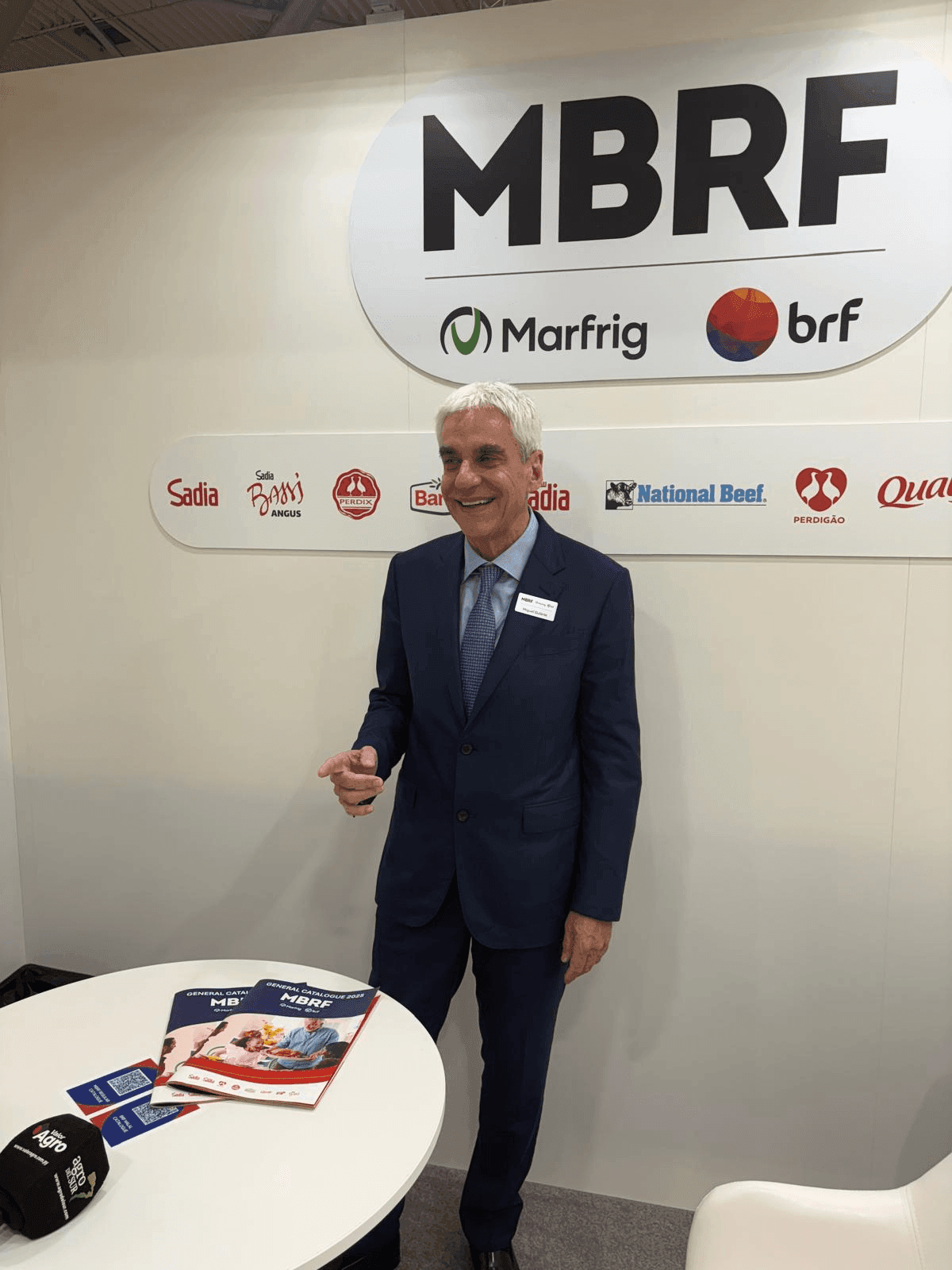MBRF strengthens its multiprotein platform with a strong focus on Uruguay
The official presentation of MBRF on the international stage marked the completion of the merger between Marfrig and BRF —one of the most significant corporate operations of the year in the global protein business. Its CEO, Miguel Gularte, explained that the new company emerges with unprecedented scope: “It is a protein company with revenues of R$ 160 billion, presence in multiple geographies, and more than 420,000 clients around the world.”
MBRF brings together iconic brands such as Sadia, Perdigão, Paty, Montana, and Bassi, along with a strong presence in the United States through National Beef, one of the most recognized beef processors in the North American market. “The company combines strong brands, diversified markets, and excellent plants. The complementarity between Marfrig and BRF allows us to offer all proteins to different types of customers,” said Gularte.
Regarding the evolution of the global market, Gularte highlighted the value of operating as a multiprotein company. “We’re currently experiencing a very positive moment in poultry and pork, with both supply and demand increasing. In beef, demand remains strong and shows no signs of slowing. The United States remains steady, Australia is going through a herd liquidation phase, and Brazil has reached a production peak that will likely decrease in the short term. Everything suggests that the balance between supply and demand will be maintained,” he analyzed.
The MBRF president emphasized that the group’s strategy focuses on branded and value-added products, which are better able to withstand international price volatility. “That was Marfrig’s strategy even before the merger, and now we are consolidating it within MBRF. We work with organic beef, branded beef, and high-performance industrial products. Value-added products are more resilient and give us greater flexibility in choosing markets,” he said.
The executive underlined the strategic importance of Uruguay within that framework. “It’s a key country due to the quality of its production, its niche markets, and its recognized brands. Over the past three years, we’ve made significant investments, particularly in the Tacuarembó plant, which now has greater processing capacity and excellent infrastructure,” he stated.
Gularte noted that keeping the Uruguayan plants under MBRF’s control —after the previously considered sale was discarded— strengthens the group’s regional position. “Uruguay produces beef of the highest quality and fits perfectly into a multiprotein platform. This allows us to reach more clients and offer different products according to each market’s needs,” he explained.
When asked about the possibility of increasing slaughter volumes, he said the strategy will be to operate “at full capacity within the available supply,” acknowledging that in Uruguay, demand usually exceeds supply. “It would be ideal to maintain stable slaughter levels throughout the year, but Uruguay still has seasonal cycles. The key is to capitalize on the steady global demand for protein,” he added.
The tariff situation also provides short-term advantages for the country. Gularte acknowledged that the additional tariff imposed by the United States on Brazilian beef creates an opportunity to boost shipments from Uruguay and Argentina. “Geographical diversity allows us to mitigate risks. When there are tariffs or restrictions in one country, we can offset them with production from another. As long as this situation lasts, we will maximize exports from Uruguay and Argentina,” he confirmed.
Gularte also highlighted Uruguay’s distinctive position in the global beef landscape. “Uruguay is a boutique of beef. It sells to the best destinations in the world and enjoys unique technical credibility. It was the first Latin American country to export chilled beef to the non–foot-and-mouth circuit back in 1995, and even during crises like 2022, it managed to reopen markets in record time. Today, Uruguay exports to destinations once considered unthinkable for a country with vaccination, such as Japan,” he stressed.
As for the near future, the executive was cautious yet optimistic. “I don’t like to make price forecasts, but all indicators suggest that demand will continue to outpace supply. What matters is that the business remains profitable for both producers and processors. It’s not about one winning and the other losing —success must be shared,” he concluded.
